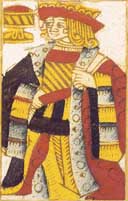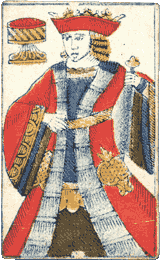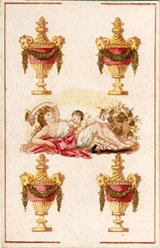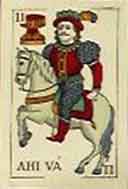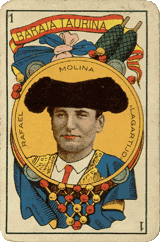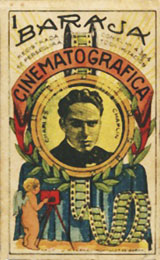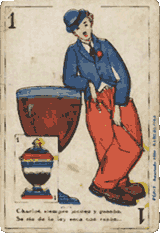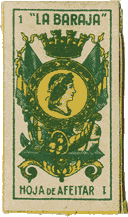Spanish Playing Cards
Spain has played a pivotal role in the history of playing cards in Europe and Latin America.
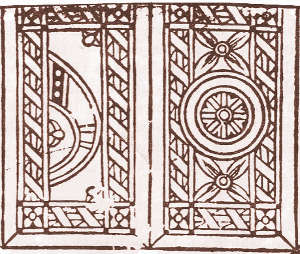
Above: archaic Moorish playing cards, XV century.
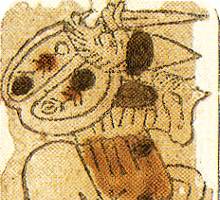
Above: early XV century cards.
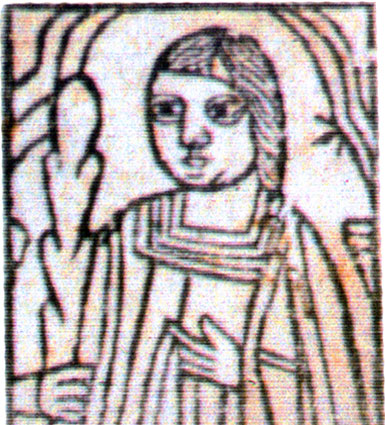
Above: XV Century Catalan Playing Cards.
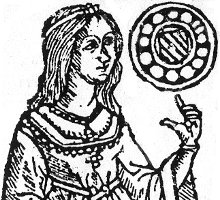
Above: Gothic Spanish-suited cards.

Above: Archaic sixteenth century playing cards by Francisco Flores.
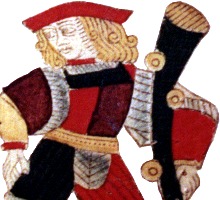
Above: 17th-18th century Spanish playing cards.
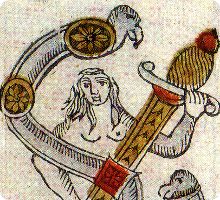
Above: Joan Barbot, San Sebastian, c.1780.
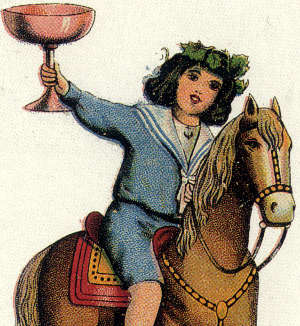
Above: Litografía Madriguera, c.1896.
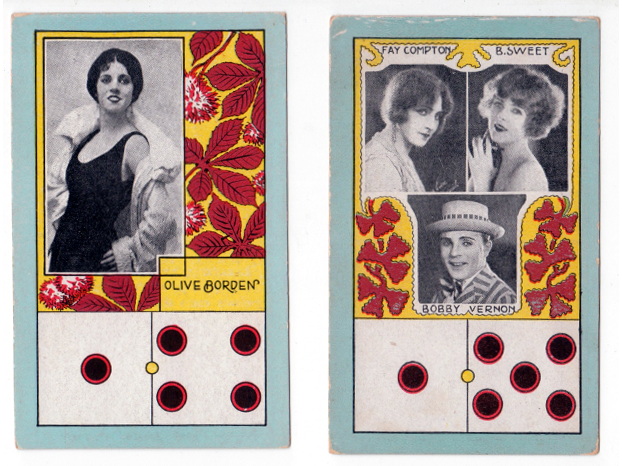
Above: Domino Cinematográfico, Barcelona, c.1925.

Above: Zoo Comics, 1968.
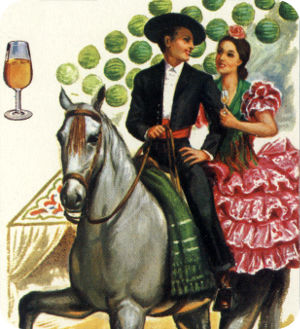
Above: Baraja Andaluza.
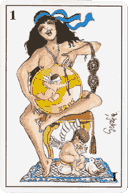
Above: Baraja 'Te Amo'.
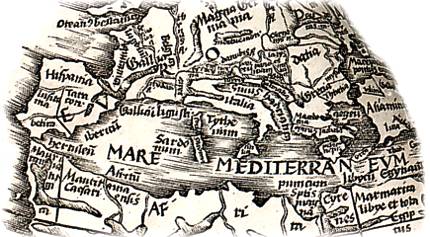
Spanish Playing Cards ~ La Baraja Española
Spanish suit symbols are cups, swords, coins and clubs (termed copas, espadas, oros and bastos) but the form and arrangement differs from Italian cards.

SPAIN has played a pivotal role in the history of playing cards in Europe and Latin America. One view is that the early history of playing cards in Europe was related to the invasion of North Africa, Spain and Sicily by Islamic forces during the Mamluk Sultanate of Egypt which ended in 1517. This coincided with the Nasrid Kingdom of Granada (13th - 15th century), the last Islamic stronghold in the Iberian Peninsula, which was linked to North Africa via the Strait of Gibraltar. Spain has had a complex colonial history and Spanish playing cards have travelled to the ‘New World’ where the legacy of Spanish-suited playing cards still prevails today from Mexico to Patagonia, as well as other remote parts of the globe.
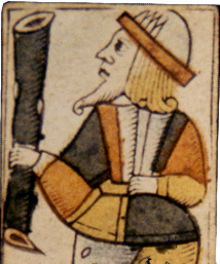
Above: archaic Spanish playing cards dated 1707.
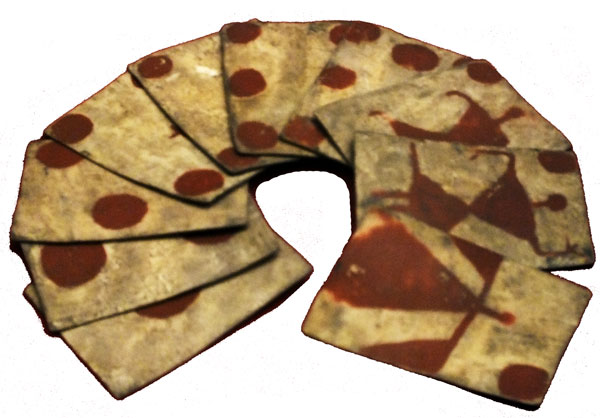
Above: Mapuche Indian Playing Cards.
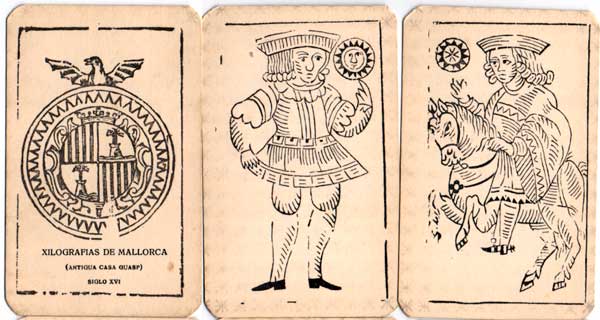
Above: Xilografías de Mallorca, mid-18th C.
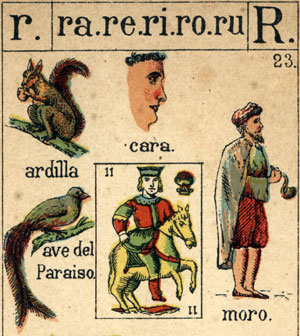
Above: Recreo Infantil, 1888.
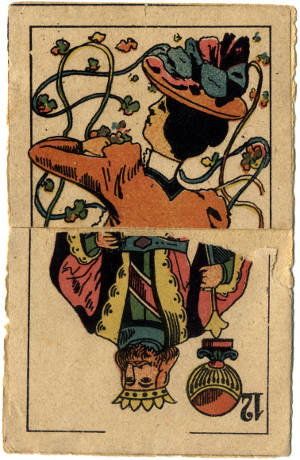
Above: Spanish Conjuring Cards, 1890.

Above: Juan Roura, Barcelona.
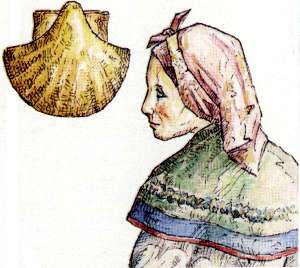
Above: Baralla Galega, 1983.
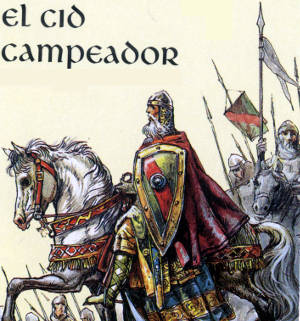
Above: ‘El Cid Campeador’ 1999.
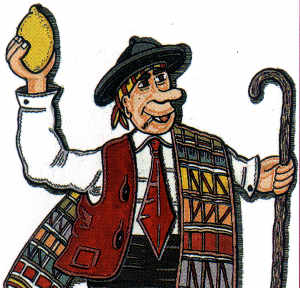
Above: Capel Vinos, 2001.
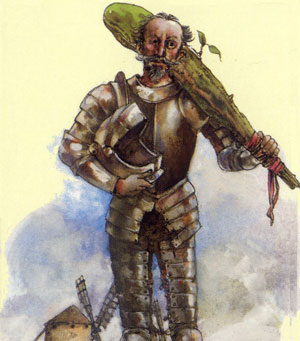
Above: Don Quijote IV Centenario, 2004.
An abundance of early literary references are in the Spanish language. Playing cards have been popular in Spain since their very first introduction there. Early sources refer to playing cards and card games in dictionaries and merchants’ inventories, to various card-makers and to prohibitions of card games, mostly around Barcelona and Valencia, in the late 1300s and early 1400s. Historical archives from Barcelona, 1380, mention a certain Rodrigo Borges, from Perpignan, and describe him as “pintor y naipero” (painter and playing card maker). He is the earliest named card-maker. Other card makers named in guild records include Jaime Estalós (1420), Antonio Borges (1438), Bernardo Soler (1443) and Juan Brunet (1443). The types of cards mentioned include “large cards, painted and gilded” as well as “Moorish” cards and “small” cards.
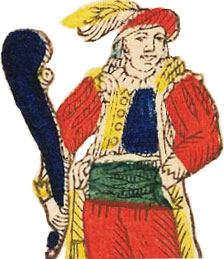
With the marriage in 1468 of the Catholic monarchs Ferdinand of Aragon and Isabella of Castille, the Spanish nationality came into existence in its definitive form. The catholic monarchs inherited the trading routes linking the Cantabrian ports with Flemish and French production centres. To this they soon added trade routes to England, North Africa and Italy. Catalonia experienced a revival of its importance in the Mediterranean reaching as far as Egypt. And, of course, Columbus discovered the 'New Indies' in 1492… thus Spain became a sort of emporium for the exchange of goods and artefacts from a very broad compass reaching almost literally to all four quarters of the globe.
Some of the earliest-known tarot cards, hand painted and illuminated in the 15th century, were supposed to have been discovered in Seville although the game of tarocchi has never been played in Spain. At the same time many Spanish-suited packs were engraved in Germany during the second half of the fifteenth century. Other 15th and 16th century evidence of Spanish playing cards have turned up in Latin American museums and archives. An interesting example are the archaic Spanish-suited cards unearthed in the Lower Rimac valley, Peru during archaeological excavations which are very similar to cards by Francisco Flores preserved in the Archivo de Indias (Seville).
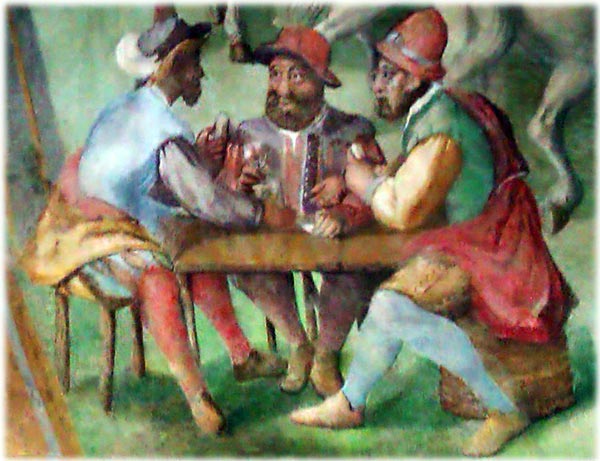
Above: detail from “La Sala de Las Batallas” mural painting in El Escorial palace (Madrid) produced by a team of Italian artists, late 16th century.
The Spanish state playing card monopoly was first established during the reign of Felipe II, in the 16th century. It was divided into several regions, including Mexico and ‘New Spain’, Toledo, Castile and Seville. Leases for these respective monopolies were awarded on a competitive basis to the highest bidder and subject to strict controls. Lease holders also enjoyed the protection of laws governing the playing card monopolies, which included the outlawing of contraband playing cards read more →.
Spanish playing cards are today divided into several distinctive types or patterns, some more ancient than others, which are often associated with different regions, as well as a wide range of non-standard cards which testify to the creative genius of Spanish artists. The suits are usually numbered through 1 - 12. A peculiarity to be observed in Spanish cards is that the suits of cups, swords and clubs have respectively one, two and three gaps or intervals in the upper and lower marginal lines of every card, called pintas.
Moorish Cards • Gothic Spanish-suited cards • South German Engraver • Early German Engraved Cards • Benita la Bruja • Phelippe Ayet/Jean Pouns • Pere Rotxotxo • Navarra pattern • Spanish National pattern • Benoist Laius • Money Bag pattern • Rotxotxo Workshop Inventories, Barcelona • Joan Barbot • Xilografías de Mallorca • Real Fábrica de Macharaviaya • Naipes Comas • Baraja Constitucional, 1822 • José Gombau, 1833 • Torras y Sanmarti, 1830 • Sanmarti, 1840 • Maciá Pattern • José Martínez de Castro (Madrid) • Baraja Mitológica, c.1815 • Fournier Hermanos (Burgos) 1860 • Baraja de Amor, Hijos de Taboadela, 1871 • Heraclio Fournier S.A. (Vitoria) • Castilian pattern • Fournier: El Fundador • Ibero-American Deck • República Española Souvenir • Hija de B. Fournier (Burgos) • Jaime Margarit Naipes Instructivos, 1888 • Antonio Moliner (Burgos) 1890 • Conjuring cards, c.1890 • Litografía Madriguera, 1896 • “El Perú” Fabrica de Cigarrillos Roldan y Cia • Historia de España, 1896 • French Catalan pattern • Spanish Catalan pattern • S. Giráldez (Barcelona) c.1910 • Simeon Durá (Valencia) • Belgian Spanish Cards • Baraja Cinematográfica, c.1925 • Domino Cinematográfico, c.1925 • Artistas del Cine, c.1926 • Cine Manual, c.1927 • El Monoplano, c.1926 • Baraja Boxeo, c.1930 • Baraja Hoja de Afeitar • Romance Español • Descubridores y Colonizadores de America, c.1952 • Monumentos de España, c.1955 • Classic • América, 1960 • Europe, 1962 • Baraja Marca “Tití” • Juan Roura (Barcelona) • Zoo Comics, 1968 • Heráldica Castanyer • Spanish Regional Costumes • Baraja Andaluza, 1980 • Baralla Galega, 1983 • Naipes Milano 1988 • Baraja Digital, 1990 • Vic Joc de Cartes, 1990 • Naipes “El Castillo”, 1991 • Baraja Canaria, 1995 • El Cid Campeador, 1999 • Baraja Gallega, 2002 • Mas-Reynals: Baraja Edad Media, 1993 • Catalan pattern • Naipe Español Ref.201 • Naipe Español 2003 • Gabriel Fuentes 2003 • Asescoin: Baraja Marinera, 1995 • Baraja Asescoin 1998 • Baraja Taurina 1999 • Baraja Clavería 2001 • Baraja Literaria, 2002 • Baraja Hispanoamericana, 2003 • Baraja "Te Amo" • Don Quijote IV Centenario • Repoker Político Diario 16 • La Baralla Espanyola de Regió 7 • Málaga Souvenir Playing Cards • Capel Vinos, 2001 • Salvador Dalí
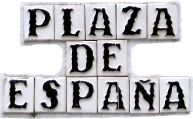
REFERENCES:
Agudo Ruiz, Juan de Dios: Los Naipes en España, Diputación Foral de Álava, 2000
Denning, Trevor: The Playing-Cards of Spain, Cygnus Arts, London, 1996
Pratesi, Franco: Cinco Siglos de Naipes en España, in La Sota nº 16, Asescoin, Madrid, March 1997, pp.27-51
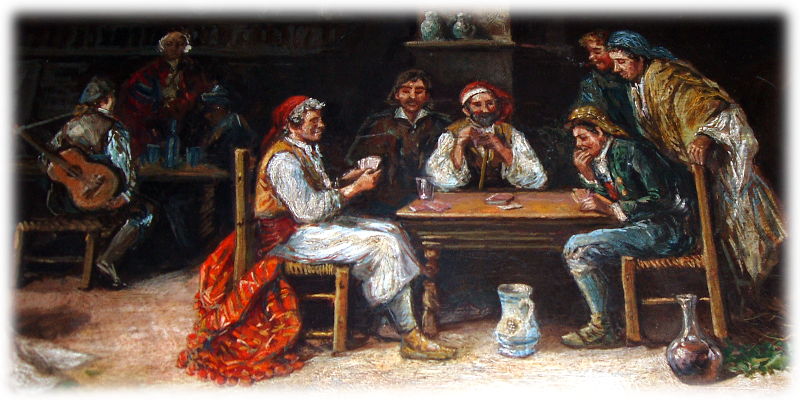

By Simon Wintle
Member since February 01, 1996
Founder and editor of the World of Playing Cards since 1996. He is a former committee member of the IPCS and was graphics editor of The Playing-Card journal for many years. He has lived at various times in Chile, England and Wales and is currently living in Extremadura, Spain. Simon's first limited edition pack of playing cards was a replica of a seventeenth century traditional English pack, which he produced from woodblocks and stencils.
Trending Articles
Popular articles from the past 28 days
Related Articles
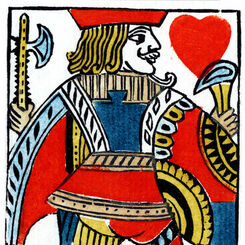
Woodblock and Stencil Jack of Hearts
A limited edition art print of the Jack of Hearts 1984 woodblock joker.
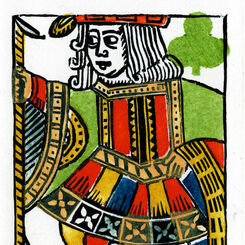
Woodblock and Stencil Jack of Clubs
A limited edition art print of the Jack of Clubs 1984 woodblock joker.
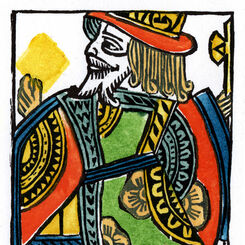
Woodblock and Stencil King of Diamonds
A limited edition art print of the King of Diamonds 1984 woodblock joker.
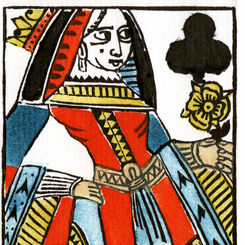
Woodblock and Stencil Queen of Clubs
A limited edition art print of the Queen of Clubs 1984 woodblock joker.
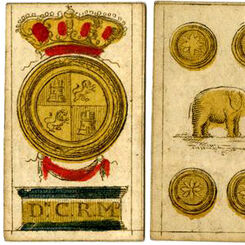
Miniature spanish-suited playing cards
Pack of 48 miniature spanish playing-cards published by C R.
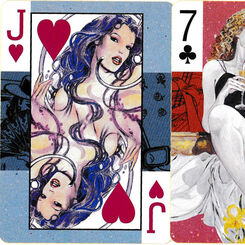
Manara: baraja de poker
Exotic illustrations by Italian comic book artist and writer Milo Manara.
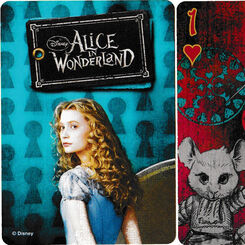
Alice in Wonderland
Alice in Wonderland collector’s edition with illustrations of characters from the film, published by...
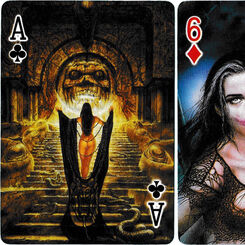
Women by Royo
‘Women by Royo’ erotic playing cards published by Heraclio Fournier, Spain, 2001.
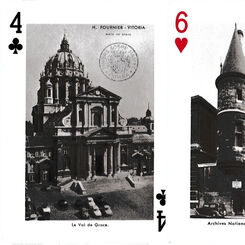
Monuments de Paris
‘Monuments de Paris’ souvenir playing cards produced by Heraclio Fournier, c.1964.
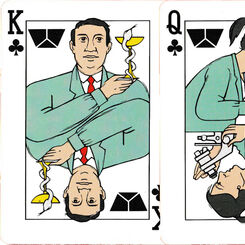
B. Braun-Dexon®
Publicity pack promoting B. Braun-Dexon’s atraumatic needles, with non-standard courts and pips.
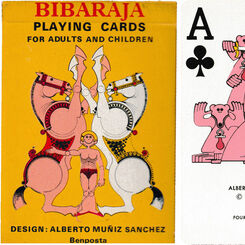
Bibaraja
Amusing designs of boys as circus performers by Alberto Muñiz Sánchez.
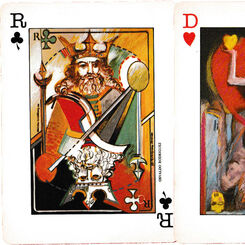
Peintres Latino Americains
Original artwork by 18 different Latin American artists.
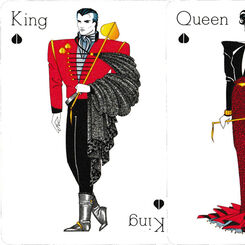
Paco Lobo
Highly original and striking designs by Paco Lobo for the fashion house of the same name.
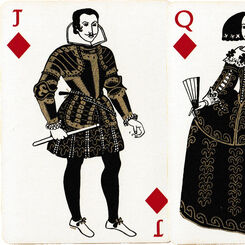
Loewe: Moda Europea Siglo XVII
Luxury pack for the Spanish fashion house Loewe, with 17th century costume designs by Margot Hamilto...
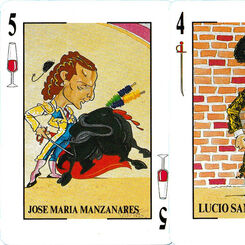
Toros: De El Cordobés a Espartaco
Publicity pack for the Spanish newspaper Ya with caricatures of famous bullfighters by Fernan...
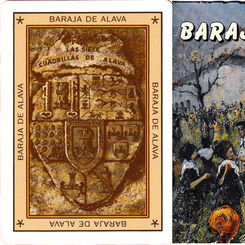
Baraja de Alava
55 different paintings by Emilio Lope depicting the history and culture of Vitoria and the province ...
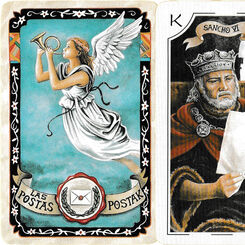
Postak – Las Postas
‘Postak - Las Postas’ playing cards commemorating the history of the Basque postal service, Spain, 1...
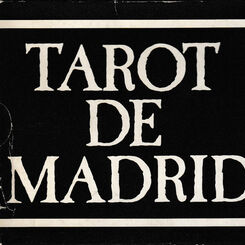
Tarot de Madrid
Black-and-white photographs of models whose faces are made up using elements found on the major arca...
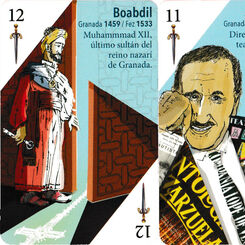
Naipes de Personajes Granadinos
Forty famous men and women with links to Granada, on a pack designed by Rubén Garrido.
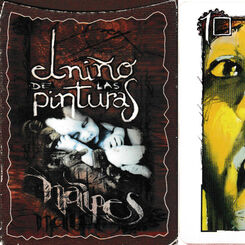
El Niño de las Pinturas
Forty-nine distinctive works by Spanish graffiti artist Raúl Ruiz.
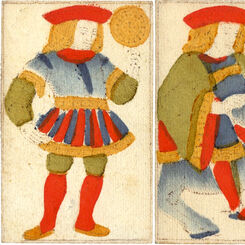
Pere Pau Rotxotxo Puigdoura
Spanish national pattern by Pere Pau Rotxotxo Puigdoura (1766–1797).
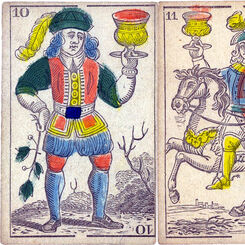
Spanish-suited deck by J.Y. Humphreys
A rare Spanish-suited deck published by J.Y. Humphreys, Philadelphia, c.1816.
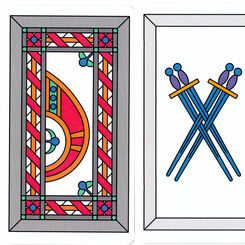
Moorish Deck
Review of “Trzes’ Moorish Deck” facsimile published by Ulrich Kaltenborn, Berlin, 2023.
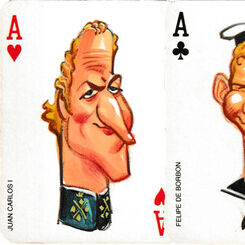
El Jueves playing cards
Caricatures of 52 famous Spaniards for the satirical magazine “El Jueves”.

Naipe Navarro
Historical figures and artefacts from Navarre with designs by M. Sinués for the Navarre Association ...
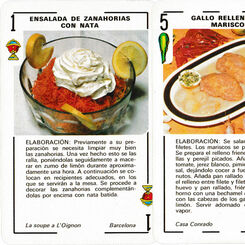
Bankunión playing cards
Ingredients and recipes for 24 dishes from different regions of Spain.
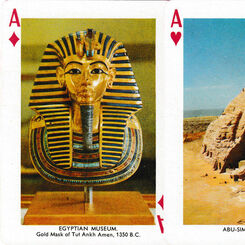
Souvenir Playing Cards of Egypt
55 different photographic views of Egypt in full colour.

Baraja Mística
‘Baraja Mística’ satirical playing-cards featuring revelling clergy published by Litografía Fernánde...
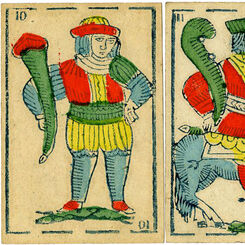
P. Buscaglia: Spanish-suited cards
Spanish-suited cards published by P. Buscaglia, Mele & Genova.
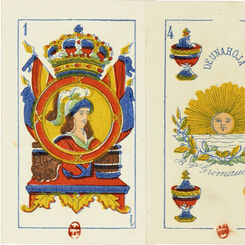
B.P. Grimaud pack for Bolivia
Spanish-suited pack made in France for sale in Bolivia, c.1880.
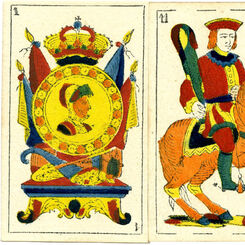
José Maria Durán
Spanish Catalan pattern by José Maria Durán, Barcelona, c.1870.
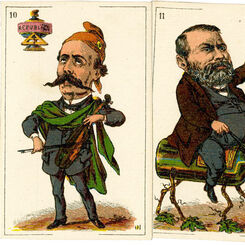
Spanish Political pack
Satirical playing cards manufactured by Francar y Cía depicting political situation, Barcelona, 1872...
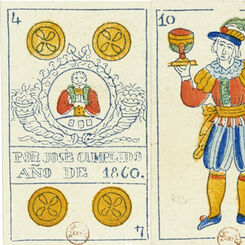
José Cumplido
Raimundo García pattern produced by José Cumplido in Madrid, dated 1860 on the four of coins.
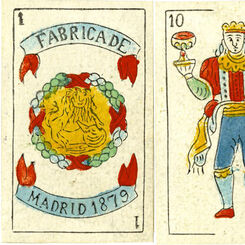
Juan Humanes y Cía
Raimundo García pattern published by Juan Humanes y Cía, Madrid, 1879.
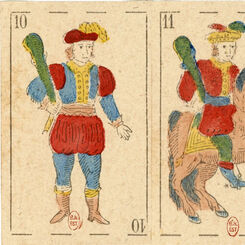
Pou y Cía
Catalan pattern made by Pou y Cía, Madrid c.1860.
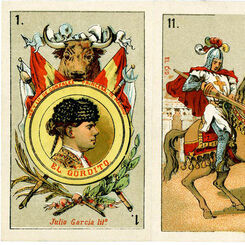
Nueva Baraja Taurina
'Nueva Baraja Taurina' designed by Pedro Maldonado, Madrid, c.1885.
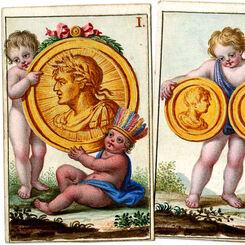
Amorcillos
‘Amorcillos’ (Cupids), a masterpiece from the golden age of Spanish playing cards by Clemente Roxas,...
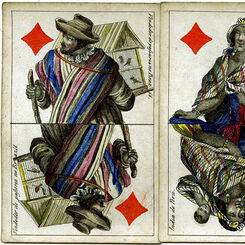
South American Costumes
Costumes of people of Brazil, Peru and Mexico, with views of Rio de Janeiro on the aces.
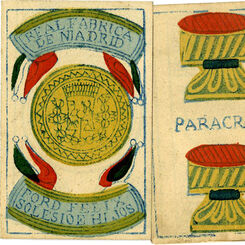
Félix Solesio e Hijos
Félix Solesio e Hijos - Real Fábrica de Madrid - Spanish National pattern for Venezuela
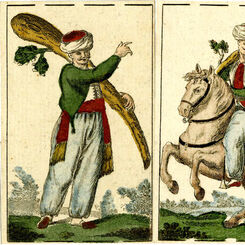
Four Empires - Clemente Roxas
‘Four Empires’ playing cards produced by Clemente Roxas, c.1805.
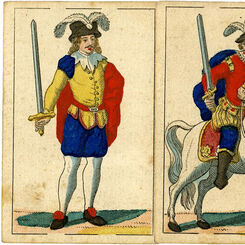
Llombart Costume Pack
Military-style costume pack made by Anton Llombart, Barcelona, 1815.
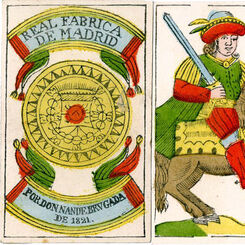
Juan de Brugada
Spanish National pattern by Juan de Brugada e hijo, Real Fábrica de Madrid, 1821.
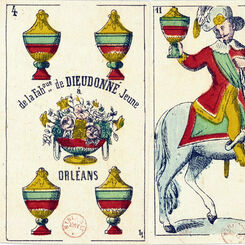
Aluette by Dieudonné Jeune, Orléans, c.1850
Aluette game by Fabrique Dieudonné Jeune, Orléans, for Spanish market, c.1850.
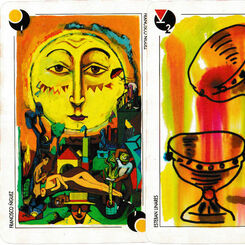
Baraja Española de Pintores Murcianos
A Spanish-suited pack as conceived by 48 different artists from the region of Murcia.


